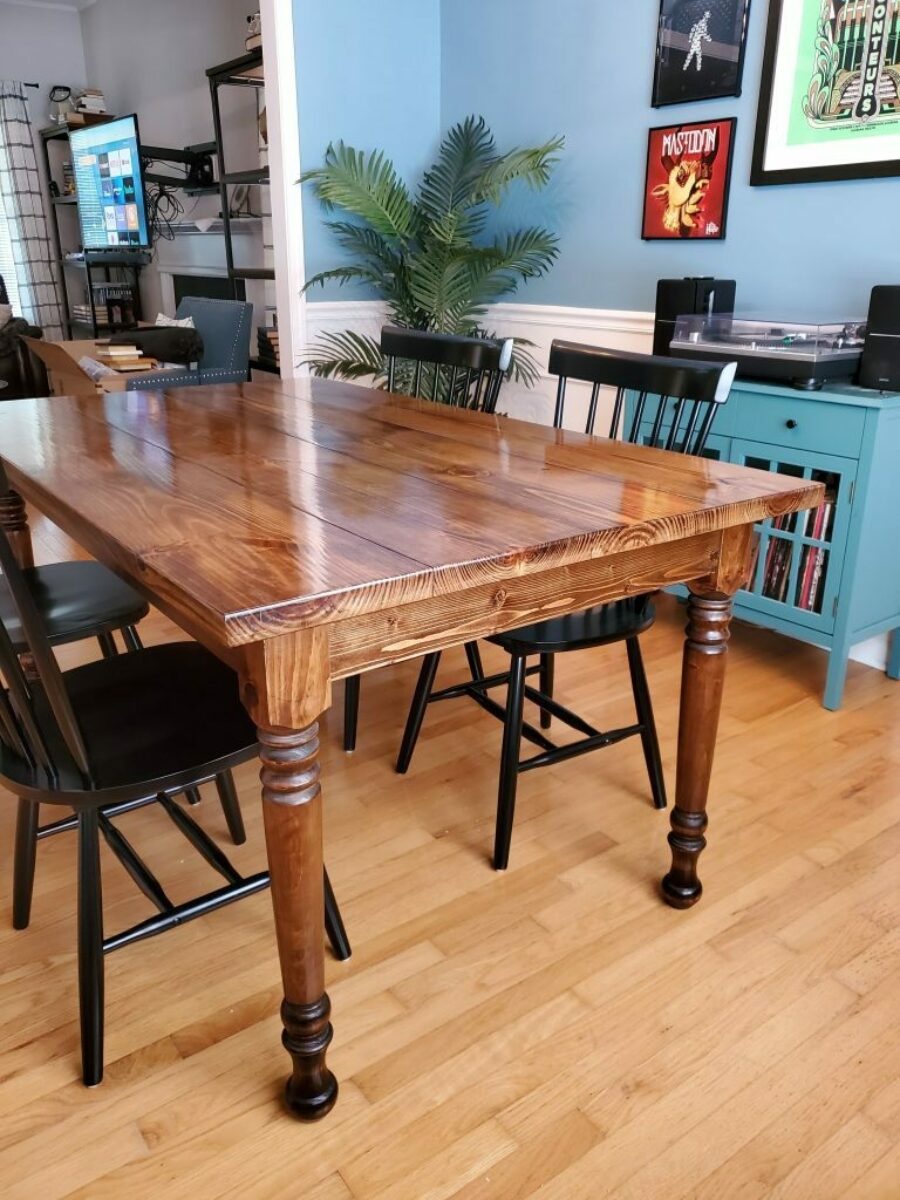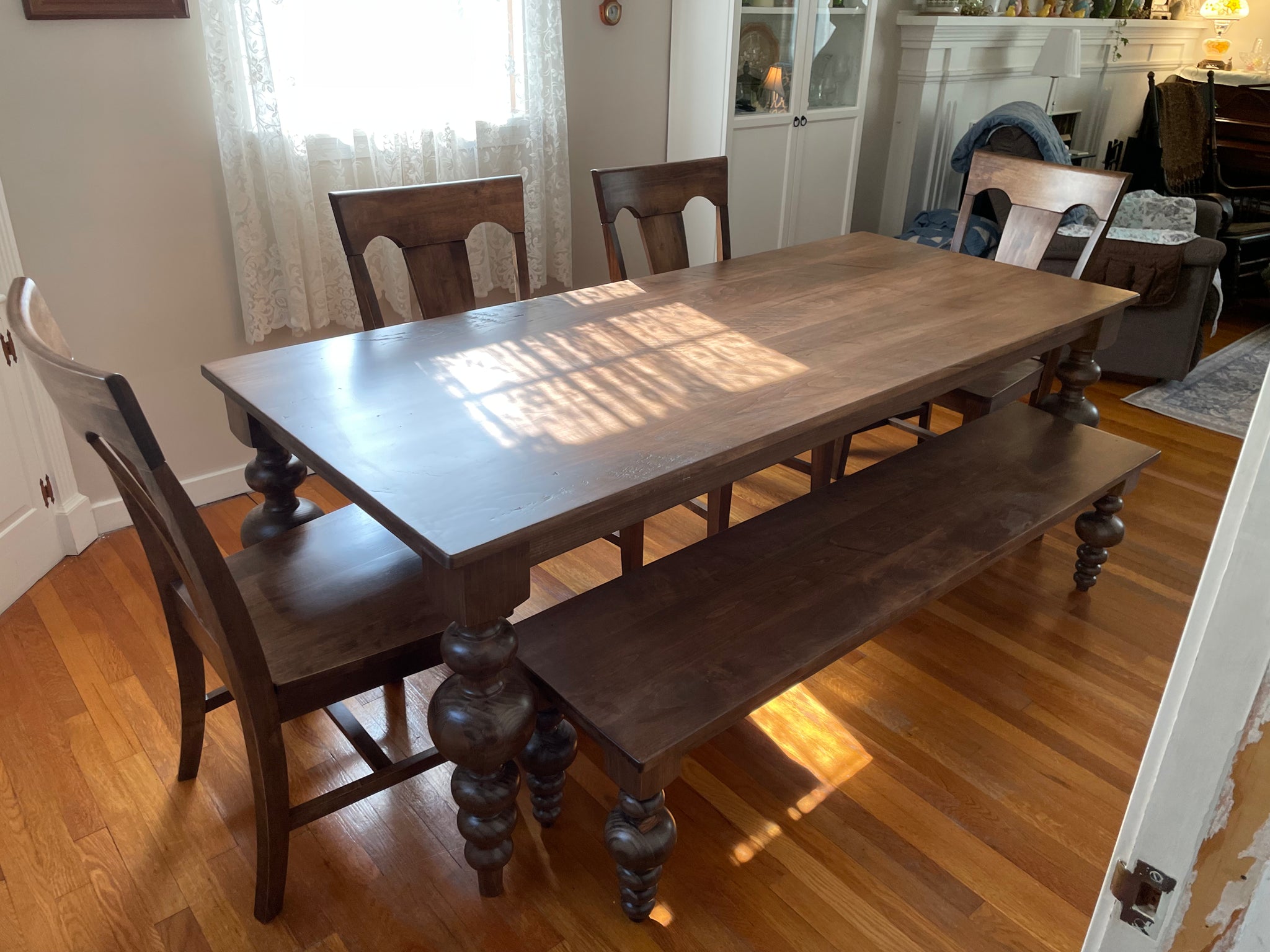Just How to Select the Perfect Eating Space Table Legs for Your Home Decor
Selecting the ideal eating space table legs is a nuanced process that calls for mindful consideration of various elements, including your room restrictions, aesthetic preferences, and useful needs. The interaction between materials, dimensions, and styles can considerably affect the setting of your dining location, making it important to approach this choice methodically. As you ponder the myriad alternatives offered, it ends up being clear that the right option extends past plain appearance; it can enhance your general dining experience. What variables should you focus on to ensure your option complements your home's one-of-a-kind character?
Assess Your Dining Space
Analyzing your dining area is essential for choosing the right table legs that match both visual appeals and functionality. Begin by determining the measurements of your eating area, consisting of ceiling height, floor area, and distance to various other furnishings. This information will help determine the proper dimension and elevation of your table, which straight influences the choice of table legs.
Following, take into consideration the style and layout of your dining space. An open-concept style might profit from table legs that supply aesthetic agility, such as slender metal or acrylic options. Conversely, an extra traditional setting could require durable wood legs that supply a sense of permanence.
Examine the existing shade palette and materials in your dining area. Harmonizing the table legs with these elements develops a cohesive look that improves the general design. Furthermore, consider the capability needed in your room. As an example, if you regularly hold huge gatherings, think about legs that supply added assistance and stability.
Ultimately, a detailed assessment of your eating area will lead you in making an informed decision, making certain that your table legs not only boost the visual appeal however also offer practical objectives.
Consider Your Style Preferences
When picking dining-room table legs, it is necessary to assess your personal design choices, as they considerably influence the general aesthetic of your dining space. Your choice of table legs can either complement or comparison with existing decoration, making it crucial to align them with your recommended interior decoration motif.
If your home leans towards a modern-day aesthetic, take into consideration smooth steel or minimal wood legs that provide a tidy, uncluttered look. For a much more typical technique, ornate wood legs with detailed carvings can include a touch of elegance and refinement. Industrial designs gain from robust, resources such as redeemed timber and metal mixes, reflecting a sturdy charm.
Additionally, farmhouse and rustic styles typically prefer sturdy, chunky legs that stimulate a sense of heat and convenience. Alternatively, if your design is eclectic, you may select unique shapes or a mix of products to produce visual rate of interest.

Evaluate Product Options
The selection of material for eating space table legs plays a crucial role in both durability and aesthetic allure. Common materials include timber, metal, and composite choices, each offering distinctive features that can influence the overall look and long life of your table.
Wood is a classic option, known for other its heat and flexibility. Woods like oak and walnut offer exceptional strength and can be ended up in different spots to match any type of design. Softwoods like yearn are a lot more prone to scratches and damages, making them much less optimal for high-traffic areas.
Steel legs, usually crafted from steel or light weight aluminum, exhibit modernity and commercial charm. They are highly long lasting and resistant to put on, making them suitable for families with kids or frequent celebrations (dining room table legs). Furthermore, metal can be ended up in different colors, improving the modification opportunities
Composite materials, such as MDF or laminate, deal cost and varied designs. While commonly much less resilient than solid wood or metal, they can still supply a fashionable appearance and are frequently easy to keep.
Eventually, the material you choose need to line up with your lifestyle, visual choices, and the degree of use your dining table will experience.
Determine Elevation and Size
Choosing the ideal elevation and size for your dining room table is important for both functionality and convenience. The standard height for eating tables commonly varies from 28 to 30 inches, allowing enough legroom for many individuals when seated. Nonetheless, it is crucial to take into consideration the dimensions of your dining area and the sorts of chairs you prepare to make use of.

Furthermore, consider the percentages of your dining-room. A bigger table in a large location can develop a grand ambiance, while a smaller sized table works well in more intimate settings. Inevitably, the best elevation and size will certainly integrate with your general decoration and enhance the eating experience for you and your guests.
Explore Modification Possibilities

Additionally, the design of the legs can be customized to fit numerous styles, such as rustic, modern, or industrial. For circumstances, conical legs can evoke a mid-century modern-day feeling, while beefy, block-style legs might resonate with typical or farmhouse style.
Homeowners can also check out shade finishes, from natural wood discolorations to paint, allowing them to match or comparison with the tabletop and surrounding decoration.
Moreover, leg height can be adapted to fit details seating plans or individual choices, boosting both comfort and capability.
Lastly, special decorations, such as makings or attractive brackets, can even more customize the table legs, making the dining experience not just a dish yet a statement item in the home. By thinking about these customization options, home owners can develop a dining room table that genuinely shows their originality.
Final Thought
Selecting the excellent eating space table legs requires cautious factor to consider of numerous aspects, consisting of the dimensions of the eating area, design choices, material sturdiness, and original site wanted elevation. Modification alternatives additionally improve the ability to achieve a cohesive aesthetic that matches the overall style. By systematically evaluating these components, home owners can ensure that the picked table legs not only meet functional needs but also add positively to the eating experience and ambiance of the home.
Selecting the optimal dining space table legs is a nuanced procedure that needs mindful consideration of various elements, including your space restraints, visual preferences, and useful needs.Analyzing your dining area is vital for selecting the right table legs that match both aesthetic appeals and performance.When identifying size, measure the location where the table will be put to ensure it fits comfortably, permitting for at least 36 inches of clearance around the table for easy motion. A larger table in a sizable area can develop a grand setting, while a smaller table works well in more intimate setups.Choosing the suitable eating space table legs needs cautious consideration of various aspects, consisting of the measurements of the eating area, design choices, material sturdiness, and preferred elevation.